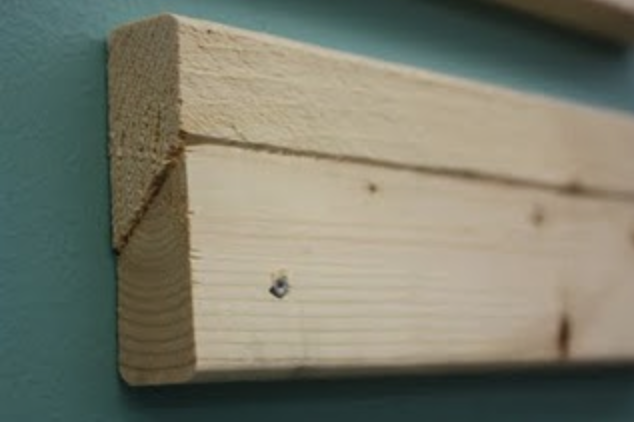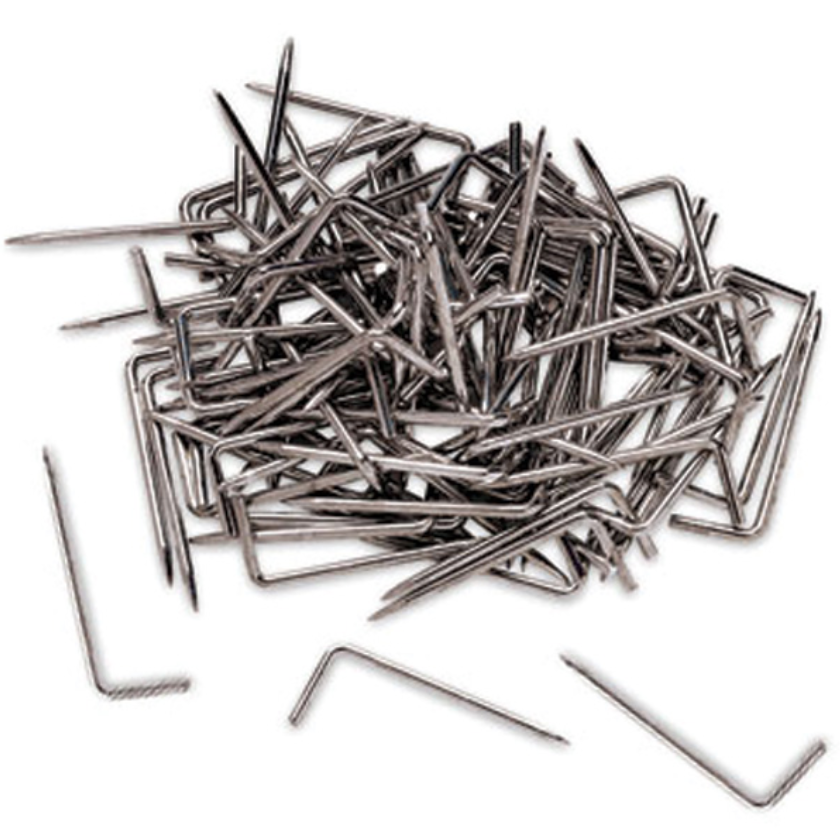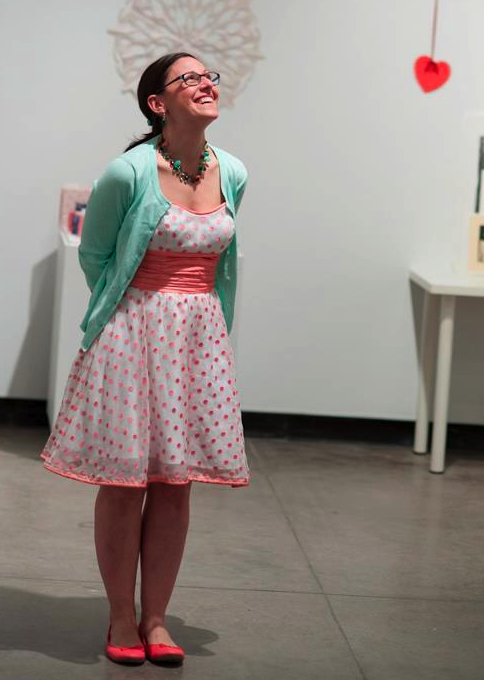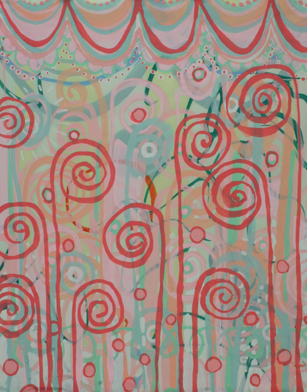When I owned a gallery one of the most challenging aspects was physically hanging all the two-dimensional artwork. At any given moment there were upwards of twenty artists represented, and each one of them seemed to employ a different hanging mechanism on the back of their work. Many times these mechanisms weren't appropriate for the pieces, and that made my job quite a bit harder. Trust me when I say that having a gallery is not easy. There are very steep overhead costs, lots of humans who come through the door with only a tiny percentage who buy, big administrative tasks from inventorying to maintaining dozens of bios/resumes, managing and training sales staff, copious amounts of marketing and advertising, the physical labor of hanging shows, and much more.
I mention all that because when an artist makes a gallery owner's job harder, it doesn't usually bode well for the artist.
During the many years I worked in galleries I heard the owners say over and over, "I'd much rather work with an artist whose work is just good, but who has all their paperwork together, gets me stuff on time, and let's me do my job, than an incredible artist who's disorganized and a pain in the ass."
Whether you're repped by a gallery or not, someone is going to end up handling your artwork. Out of respect for them you want to make sure they can present the work easily and safely in a way that allows the work to shine.
So let's talk for a moment about the mundane - but necessary! - topic of hardware.
Eyelets and Wire The traditional method of hanging a two-dimensional framed work is two eyelet screws secured into the frame or stretchers on back about one-quarter of the way down from the top (as flush to the frame as possible) with picture hanging wire strung between. If you work on stretched canvas this is the way to go. (You can also use D-rings instead of eyelet screws.)
If your work is heavy, you want the wire to go through and around the eyelet twice so that the weight of the work won't cause it to slip. Wrap a significant extra length of wire tightly around itself to secure.
Also, don't make the wire so long that the work pitches off the wall too far, or shows above the frame top. You want just a little give to it, but not too much. Ideally the peak point of the wire, when taught, will be a few inches from the top of the frame for small to medium works, and a bit more for larger works. (More here if you need help.)
Sawtooth Hangers Sawtooth hangers are great for smaller works, especially if the works are done on box frames. When using a sawtooth hanger make sure it's centered, and make sure the jagged side is down. (Yes, I've gotten work sent to me with upside down sawtooth hangers.)
If the edge of your box frame is not wide enough the person hanging the work will probably have to use two level nails (one nail and the work will fall off the wall if bumped or a breeze blows by). I've seen some artists tape string or wire across the back of small pieces. It certainly makes the work easier to hang, but the beauty of a box frame is how it sits flush to the wall.
Keyhole Hangers Admittedly, this isn't my favorite hanging method. It's a pain in the butt to line up the nail with the hole, for one, and secondly the work can totter on the rounded edge of the hole. Some pieces have two holes and, well, that's even more of a pain trying to level two nails and line them up. That said, if you have no other option you can use this. I'd try for something else first though.
D-rings These work for medium and large works. Drill or screw the d-rings into back sides of your stretcher or frame so that the rounded part is pointing upwards, of course.
These can be a pain to hang as it requires measuring tape, a level and a good amount of finagling, but if your work is very heavy it's a great option. If it's not too heavy, consider stringing wire between the D-rings (as you would eyelet screws) for easier hanging. In that scenario the D-ring top is facing inward instead of upward.
French Cleat The French Cleat is great for works done on, say, aluminum or wood - works that are, essentially, frameless. The idea is that the backside of your artwork has one beveled piece of wood secured to it. A companion piece of wood with the opposite bevel is then secured to the wall, so the beveled piece on back of the art fits right over it. This is not hard to hang, but can put significant holes in the walls, so make sure this is most appropriate method to your work before using.
L Pins For lighter frameless works - piece done on light wood or on glass that cannot be strung on the back - L pins may be the best way to hang.
In this scenario the long end of the nail is (gently) hammered into the wall, while the short end secures the work.
If you aren't hanging your own work, include four L Pins and instructions when you sell the work, or when sending to a gallery, so the buyer/gallery owner can hang it successfully.
Bumpers Obviously bumpers aren't a hanging mechanism, but I figured I'd mention them since they can be important to the presentation of your art. If a piece is pitching forward off the wall at the top, add bumpers to the bottom corners. This will move the bottom of the work away from the wall enough so that the work looks more flush to the wall. Of course, if the work is pitching forward off the wall significantly, you may be using the wrong hanging mechanism. Try tightening the wire in back or using a different method.
No hardware? A lot of folks making small affordable works use ready made frames or cheap, easy-to-assemble metal frames. There's nothing wrong with that - except when it makes the artwork a pain to hang.
If that's the case with your presentation, do your best to cleanly jerry-rig the frames for easy hanging, or include suggestions for the buyer. And, by "suggestions" I don't mean something like, "Bang nail into wall. Wedge head of the nail between the frame edge and painting edge." That's not cool.
Some Etiquette * If you make odd shaped work, like draped linen or free floating paper cuts, for example, include hanging materials with your shipment or, at the very least, include recommendations and instructions.
* If a gallery or buyer requests different hanging method on future works than the one you're currently using and you have a good relationship with the them (meaning, they sell/buy your work) do what they say. Unless, of course, there's a very specific and thoughtful reason you wish not to. In that case, have a convo with the owner/buyer and explain why your method is best.
*In general, try to keep the back of your work as clean as possible. Avoid crazy or dangerous wire ends sticking out, a million pieces of tape, protruding eyelet screws and the like. Bring some care and attention to the process. If you can paper or felt the back - great. Whatever you can do to make it NOT look like a child or madwoman put this together is ideal.
Getting it ON the wall Finally, for those who want to know how to actually get the work on the wall and what to use, this article is fantastic and covers all the nitty gritty of hanging and securing your work.















